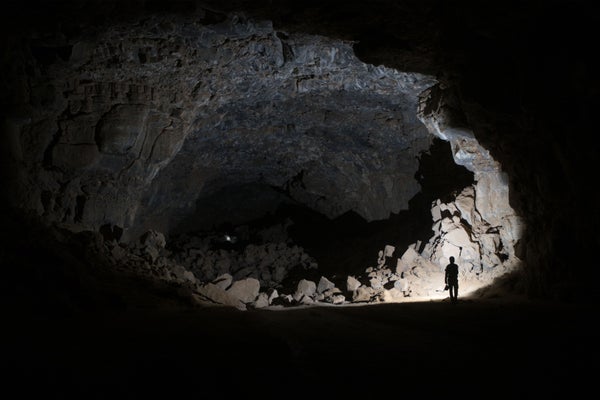Early Humans Sheltered in This Lava Tube 10,000 Years Ago—And It’s Still in Use Today
Fossils and stone tools show that a cave in Saudi Arabia has been used as shelter by humans for millennia, up to the present day
Researchers exploring the Umm Jirsan Lava Tube system.
A first-of-its-kind study in northwestern Saudi Arabia suggests that humans and their livestock have been using a cave for shelter sporadically for up to 10,000 years. The finding offers insight into the region’s history and ecology.
In the past decade, satellite data and fossil finds have suggested that the Arabian Peninsula was not always an arid desert. Periods when the region contained lakes and lush greenery might have drawn people and animals there from Africa, according to the study’s authors.
“Today, it’s a fairly harsh environment,” says study co-author Mathew Stewart, a zooarchaeologist at Griffith University in Brisbane, Australia. Across the surface of Saudi Arabia, “the fossil record is just horrendous”, he says. Wind and scorching heat reduce bones and artefacts to dust, making them difficult to study.
On supporting science journalism
If you’re enjoying this article, consider supporting our award-winning journalism by subscribing. By purchasing a subscription you are helping to ensure the future of impactful stories about the discoveries and ideas shaping our world today.
But in 2018, Stewart and his colleagues described an 88,000-year-old finger bone from the Saudi Arabian desert — one of the oldest human fossils found outside of Africa. And in 2020, they described footprints on a lake shore dating back around 120,000 years. These suggested that the region had stories to give up.
The researchers turned to caves under Harrat Khaybar, a vast basalt plain pocked with volcanic craters in northwestern Saudi Arabia. The caves were made by lava as it flowed from nearby volcanoes, forming rocky tunnels as it cooled.
An excavation near the…
Read the full article here







